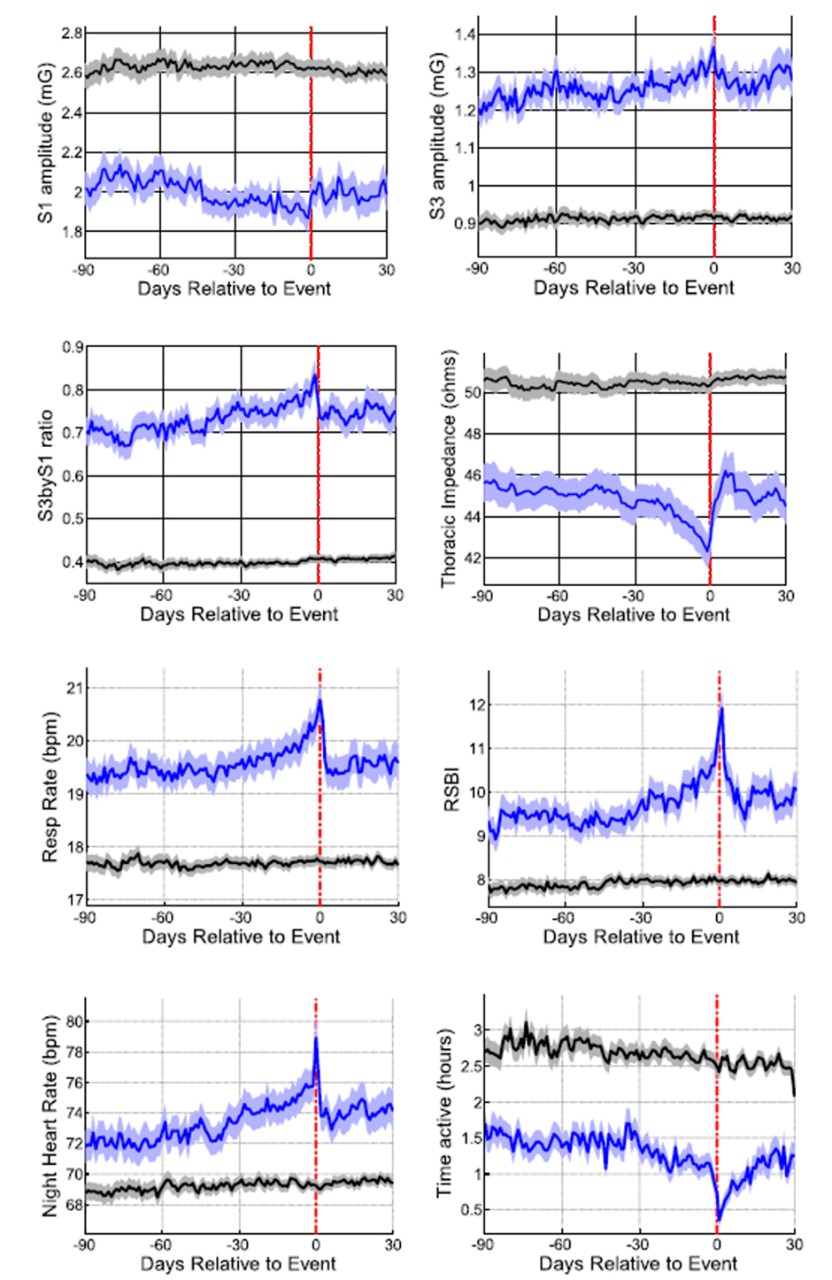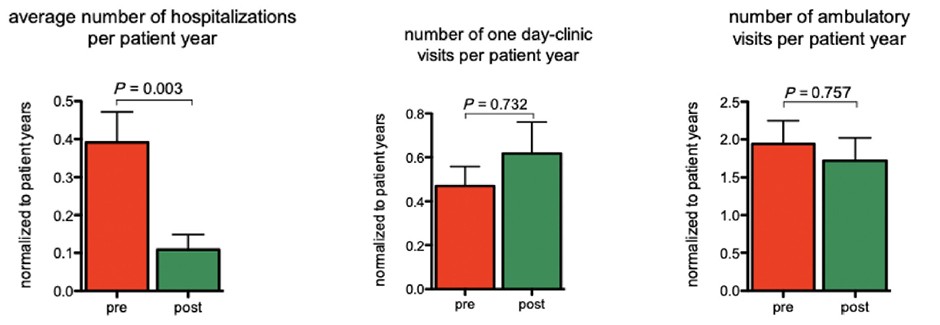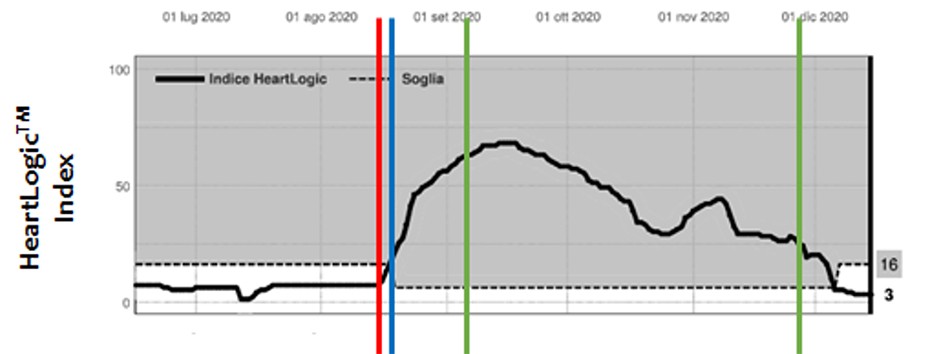Dear HeartLogic™ users,
This is a great month for HeartLogic clinical evidence.
We are delighted to inform you of two new and valuable HeartLogic articles published in the ESC Heart Failure Journal:
- Analysis from MultiSENSE Study: evaluation of sensors values during clinically stable periods and worsening heart failure
- Analysis of clinical and economic impact of HeartLogic in clinical practice
In this issue you can also find a new case of the month.
From MultiSENSE study
New evidence from the MultiSENSE study has been recently published by Dr. Gardner on ESC Heart Failure Journal.
“Multiparameter diagnostic sensor measurements during clinically stable periods and worsening heartfailure in ambulatory patients”
Aim
This analysis from MultiSENSE data evaluated:
- The range of sensor values for patients with HF events when patients were in clinically stable periods against the time course of acute decompensation and recovery from HF events.
- Differences in sensors values, collected during stable periods, among patients with an HF events and without an HF events during study conduction
A period was considered clinically stable (CSP) if between two successive follow-up visits the patient reported unchanged NYHA classification, weight change ≤ 2.27 Kg and no adverse events occurred.
Results
Among 900 patients enrolled in MultiSENSE study, physiological sensor data from 1667 CSPs were collected in 676 patients and compared with those data leading up and following 192 HF events in 106 patients.
The comparison of sensor data during CSPs between two groups (with HF events Vs without HF events during study period) showed that ALL sensor values were significantly poorer in patients who had HF events than those without HF events.
The temporal sensor changes surrounding an HF events were evaluated in four different time points (baseline, pre-event, event day and recovery period) and compared with values in CSPs in patients without HF events (Figure 1)

In the pre-event period, sensor data were significantly lower for S1 amplitude, thoracic impedance and activity, and significantly higher for S3 amplitude, ratio of S3 to S1 amplitude, respiratory rate, RSBI, and heart rate, as compared with the baseline period. During the recovery period, all of the sensors with the exception of the S1 amplitude significantly improved and most sensors recovered to their baseline values.
Conclusions
These results showed that sensor measurements, including HeartLogic value, are signficantly different not only in the phase just preceding the HF events, but also across clinically stable periods in patients with or without HF events.These findings highlight the ability of the system to discriminate patients at increased risk of HF events, even when they are in a clincially stable period.
«..these [HeartLogic] alerts may be more relevant and specific to heart failure. Because it [HeartLogic] combines multiple physiologic parameters that target different aspects of HF pathophysiology, HeartLogic is a gestalt that provides a holistic picture of the patient’s status.”
Clinical and Economic Impact of HeartLogic
An interesting analysis on Heart Failure hospitalizations before and after HeartLogic activation has been published on ESC Heart Failure Journal by Dr. Treskes
“Clinical and economic impact of HeartLogic™ compared with standard care in heart failure patients”
Aim and Methods
This analysis investigated if the HeartLogic activation reduces the Heart Failure hospitalizations in a one-year after algorithm activation compared with a one-year pre-activation period.
The protocol required a first contact after HeartLogic alert and in case there were symptoms or signs the cardiologist provided adjustment in drug or lifestyle, while in absence of symptoms or signs a new evaluation was scheduled after two weeks.
Results
This analysis was conducted in three centers from Belgium, Netherlands and Switzerland and 68 patients were included and followed for 365 days after HeartLogic activation.
51 alerts occurred in 24 patients and the average number of alerts per patient was 0.75±1.16 with a mean duration of alert of 33.7±14.1 days.
HeartLogic alert:
The number of false positive alerts was 8 (16%), the number of true positive was 37 (72%) and the number of non-HF related yet clinically meaningful alerts was 3 (6%) [three alerts were not classified for concomitant HF and non-HF events].
Two HF events were not detected by HeartLogic.
The sensitivity of HeartLogic was approximately 90%, specificity was approximately 89%
HF Events:
The HF events occurred in pre and post activation periods are reported in Table 1
| Pre-activation | Post-activation |
Total number of HF admissions | 27 | 7 |
Total number of 1 day clinic visits | 32 | 42 |
Total number of ambulatory visits | 132 | 117 |

Economic analysis:
Resource use analysis revealed a substantial drop in overall health economic costs.
A dramatic reduction in total cost, average total cost per patient (P = 0.025), and average hospitalization cost per patient (P = 0.028) after activation of HeartLogic has been observed.
Conclusions
- This study showed that the HeartLogic activation improves the remote monitoring of HF patients and promotes a reduction in total number of HF hospitalizations and a near-significant reduction in the length of hospitalization.
- In line with the clinical results, a concomitant significant reduction in hospitalization costs was noted after activation of HeartLogic.
- The unexplained alert rate was fairly low, having a positive impact on the practical workload when using HeartLogic in daily clinical practice.
Case of the month
A 73 years old man with history of coronary artery disease and depressed Left Ventricular Ejection Fraction (38%), in September 2019 was admitted in hospital for monomorphic sustained ventricular tachycardia. He underwent RF ablation of scar-related VT and dual chamber ICD implantation (RESONATE EL) with remote device monitoring and HeartLogic algorithm activation.
On 18th Aug 2020 (blue line) HeartLogic triggered an alert, but...
















